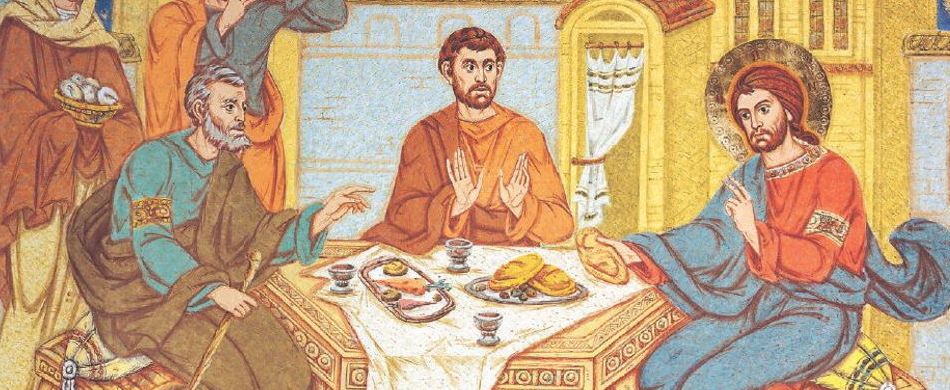THE LITURGICAL high point of the Jubilee is Easter. In Pope Francis’ words, “What a joy to announce the Easter message: Jesus is risen; there is hope for you; you are no longer in the power of sin or evil! Love has triumphed! Mercy has been victorious! God’s mercy always triumphs!”
On that first Easter Sunday, the two disciples on the road to Emmaus were anything but full of joy and hope. Cleophas and his companion were dejected as they set out to cover the seven miles between Jerusalem and Emmaus. They had put their hope in the miracle-working preacher from Nazareth, and had seen him crucified among thieves. They were broken hearted and confused because they had heard the news of the resurrection from the women at the Tomb, but they did not believe it.
Like the disciples on the road to Emmaus, it is difficult for us to know what to believe in anymore, and in the end many people opt for various forms of nihilism – the belief that there is nothing to believe in.
As the two disciples were travelling on the seven-mile road to Emmaus, a man joined them – the resurrected Jesus – but they did not recognize him. He taught them how to read the ‘signs of the times’; he told them that a disciple of Christ should never be without hope, even in the bleak hours on Calvary, for the ‘signs of the times’ indicate that the Kingdom of God has come into the world. It has come through suffering and opposition. It has come into history in the person of Jesus Christ.
There is much for Christians to be concerned or worried about in our world. But the Jubilee reminds us that the Christian does not primarily worry about how bad things are in the world, but rather gives thanks for how good things are in Christ. Such are our times – such are all times – that the good and bad are mixed together.
While we may know that Easter gives all the reasons necessary to be joyful and hopeful, sometimes our cheerfulness is tried by what we perceive as a lack of tangible signs of hope around us. It all depends on how one looks around oneself. An example might help. The soon-to-be canonized Mother Teresa was fond of saying that “every child is a gift of God.” If one really tries to believe that – to feel it rather than just to think about it – it is not hard to see signs of hope.
The disciples on the road to Emmaus did not need signs of hope – they only needed to recognize those signs that were already in their midst. In their conversation with the risen Christ, and their recognition of him at the breaking of bread, they rediscovered that hope which they had lost.
We today are heirs of that same hope because the risen Christ is still with us. He is actually walking with us, encouraging us toward new possibilities.
We still feel the pain of the world, the pain in our families and among our friends, and the pain in our own hearts. But a new element has been introduced into our lives. It doesn’t remove the pain, but it gives it a meaning; it provides us with hope. All is different because Jesus has risen and speaks his words of peace to us as he spoke them to his disciples. Faith in the resurrection of Jesus is the basis of our hope in eternal life, a hope which enables us to bear patiently the trials of this life. Therefore, there is a quiet joy among us and a deep sense of peace because we know that life is stronger than death, love is stronger than fear, and hope is stronger than despair.
Dear brothers and sisters who have been faithfully following us with so much affection all these years, as we wish you all the best during the upcoming celebrations, we would like to remind you to please remember that the Jubilee of Mercy is a precious time to renew our commitment to Christian cheerfulness, to recognize that signs of hope abound all around us.
Have a blessed Easter!




